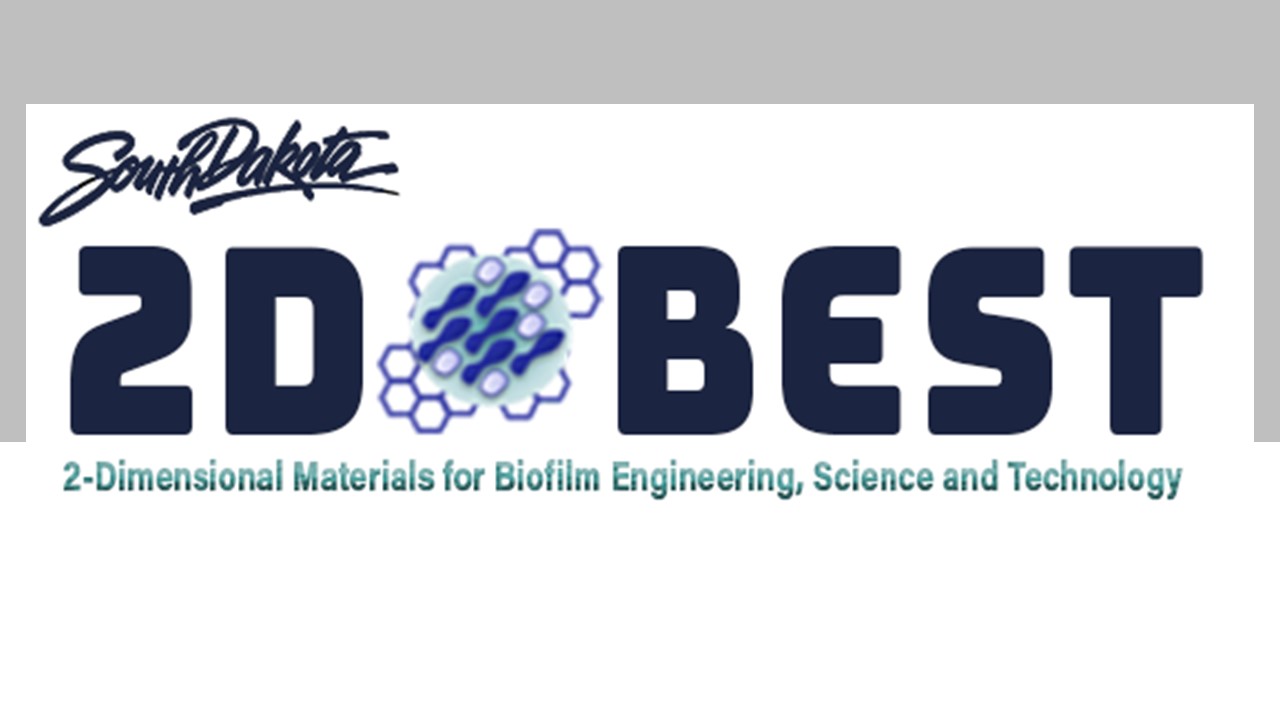South Dakota Mines Partners with Indian Institute of Technology

This piece by South Dakota Mines was published Feb. 24, 2022.
South Dakota Mines has signed a new Memorandum of Understanding (MOU) with the Indian Institute of Technology Guwahati (IITG) to advance research into two-dimensional (2D) materials and biofilms. The collaboration enables both institutions to share resources and leverage research funding opportunities while joining multidisciplinary teams to maximize complex problem solving. The work done in conjunction with this MOU will also directly benefit research underway at the South Dakota 2D BEST Biofilm Center.
“This international partnership provides Mines and the 2D BEST Biofilm Center and IITG researchers a framework to develop innovative and catalytic collaborations at the intersection of 2D materials and biofilms, which aligns well with the stated goals of NSF Office of International Science and Engineering, and which promises to advance knowledge and benefit society,” says Robb Winter, Ph.D., research director of the 2D BEST Biofilm Center and a professor of chemical engineering at Mines.
The research into 2D materials and biofilms has vast potential for future applications across many fields. This includes the medical field with research into new classes of anti-cancer, antibacterial and other pharmaceuticals. This research can also help advance new types of energy production and storage; has benefits for agriculture, including better new ways to protect and nourish crops for maximum yields; and has applications in corrosion protection that will increase the longevity of structures like steel bridges, ships, and buildings. The research collaboration can also yield new startup businesses in any of these fields that add economic development opportunities tied to each university.
“This new agreement between Mines and IITG makes the research more accessible to a wider range of students and the outcomes available to a wider audience,” says Venkata Gadhamshetty, Ph.D., an associate professor of civil and environmental engineering at South Dakota Mines. Dr. Gadhamshetty is a pioneer in creating 2D corrosion-resistant coatings for metals and an expert in microbiology and applied biochemistry.
Professor Tapas Kumar Mandal, Ph.D., and Associate Professor Partho Sarathi Gooh Pattader, Ph.D., in the Department of Chemical Engineering and Centre for Nanotechnology at IITG work on micro- and nanotechnology and its applications in healthcare and energy harvesting. This includes biosensors that can utilize non-invasive testing for disease markers, such as heavy metals or harmful bacteria. Their work can also lead to advances in energy storage, fuel cells, carbon capture, and energy generation.
“This collaboration between IITG and Mines will benefit all of us. The multidisciplinary research can utilize various strengths and expertise to move us to the next level and to benefit society,” says Dr. Mandal.
Bharat Jasthi, Ph.D., an associate professor of materials and metallurgical engineering at South Dakota Mines brings an expertise in the areas of advanced materials processing and surface engineering. “This agreement will promote collaborations and provides mutual access to facilities and research infrastructure on fundamental research related to 2D Materials and their applications,” says Jasthi.
The agreement also creates an international pipeline of graduate students who will continue advancing the science into the next generation. The MOU creates an exchange program where student researchers in each university can learn from faculty at both institutions and can access testing and research equipment at both facilities.
“IITG has world class state of the art facilities and equipment in the Central Instrumentation Facility and the Center for Nanotechnology, available to researchers and graduate students with expert faculty oversight and training,” says Dr. Mandal.
Associate Professor Krishna Pada Bhabak, Ph.D., in the Department of Chemistry and the Center for the Environment at IITG, is focusing on healthcare applications. His research in organic and bioorganic chemistry can revolutionize drugs and drug delivery systems, such as creating medicines that attack cancer cells without harming the surrounding tissues. His work also delves into creation of new antibacterial and antiviral medicines plus an effort to build sensors that can provide early detection of cancer and other diseases.
“I am part of a very young group of researchers at IITG and this MOU with Mines will definitely open new avenues of collaboration. I am looking forward to the future of what we can accomplish together,” says Dr. Bhabak. “I can already envision a significant number of collaboration opportunities, with all of the exciting work at IITG,” Dr. Gadhamshetty adds.
Most importantly, the collaboration makes both universities more competitive with major intuitions when applying for a limited pools of research funding. “This agreement between Mines and IITG facilitates the young researchers and the top scientists to easily collaborate and apply for grants together,” says Professor Alan Dalton who works with Dr. Manoj Tripathi, at University of Sussex in the United Kingdom. While both are not direct part of the new MOU, they give praise to the collaborative effort and look forward to the interdisciplinary collaboration. Professor Dalton and Dr. Tripathi are experts in the field of low dimensional materials applicable in flexible electronics, straintronics and sophisticated sensors. Their research interest includes exploring the nano to microscale solutions of complex phenomena at the surface and in the composites. They will be working alongside the research groups at both universities.
The research collaboration tied to the new MOU is already underway at Mines and IITG. The work is building on past research advancing the use and understanding of 2D materials. Gadhamshetty credits success to the entire team of researchers. “Our group members and collaborators deserve the credit for helping to integrate my own 2D coatings research into grant proposals and successfully funded projects. I’m excited that partnerships we are building will bear fruit in both new research funding opportunities and scientific breakthroughs for many years to come,” he says.
 National Science Foundation RII Track-1 Project:Expanding Research, Education and Innovation in South Dakota
National Science Foundation RII Track-1 Project:Expanding Research, Education and Innovation in South Dakota